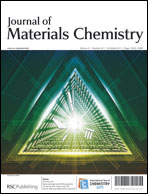The performance of biosensors, i.e. the sensitivity, specificity, linearity, reusability, chemical stability, and reproducibility is critically dependent on the biofunctionalization of the sensor platform. The type(s) of linkers used for the immobilization of the capture probes and the exact immobilization protocol play a vital role in the overall performance of sensors. A variety of linker molecules have been used to biofunctionalize technologically important substrates (glass, gold, mica etc.). Amongst the different linkers, researchers have paid more attention to two dimensional architectures, e.g.silanes, polyaniline (PANI), alkanethiols, poly-L-lysine (PLL), etc. Despite extensive research and a large number of reports, researchers still face problems related to limited loading efficiency, limited accessibility of the probes, poor control over uniform spacing among the probes and a loss of functionality due to irregular orientation of the probes, all of which cause variability in the responses. Three dimensional gel based matrices have proved to be a better choice, except for the fact that the leaching of entrapped probe molecules has limited their use in developing sensor platforms. Taking into account the limitations of the two dimensional linker arrays and three dimensional gel matrices, supramolecular dendritic architectures have shown immense potential in designing and developing the sensor platforms. Dendrimers are well-defined, monodispersed, globular macromolecules constructed around a core unit. Different properties of dendrimers, i.e. their structural uniformity, globular shape, monodispersity, the existence of dendritic crevices, high functional group density, hydrophilicity, versatility to design dendrimer of different composition and their nanometric size can be exploited while developing high sensitivity biosensors. Researchers have demonstrated that these hyperbranched 3D molecules show enhanced sensitivity, reduced nonspecific binding, greater accessibility of the probe for the target analyte, high stability and low variability in their response. Hence, designing a sensor with a dendrimer as a linker is a successful approach to obtain superior sensor performance and minimize the overall cost of a sensor. In this article, we discuss various aspects of dendrimers from the point of view of sensor design, hoping that this review will excite more researchers into exploiting the exceptional properties of dendrimers in biosensor development.


 Please wait while we load your content...
Please wait while we load your content...